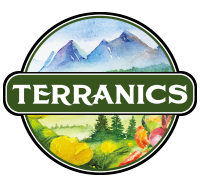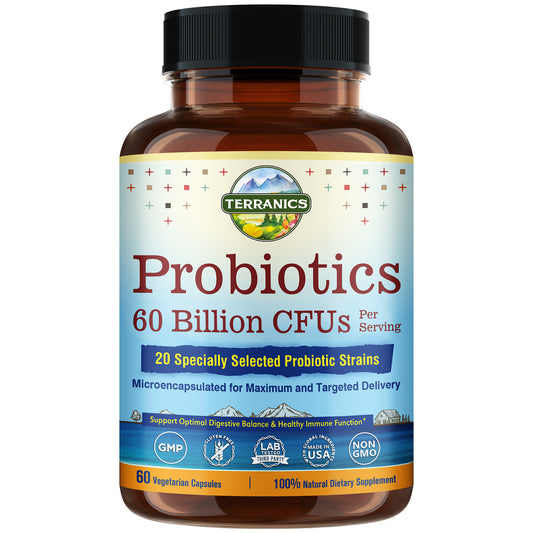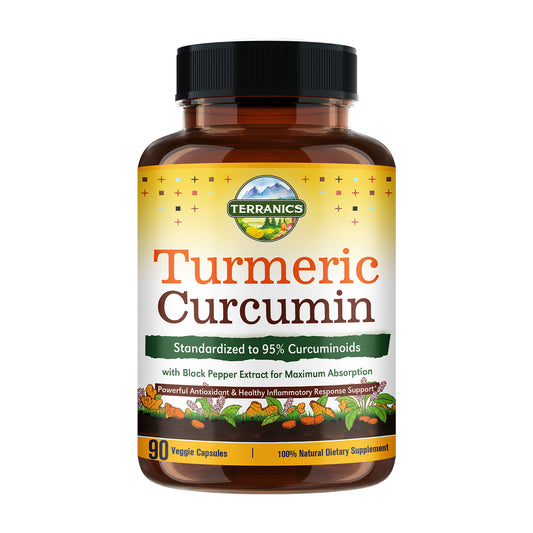In the realm of nature's wonders, few organisms captivate the human imagination quite like mushrooms. These peculiar fungi possess an otherworldly allure, with their diverse shapes, vivid colors, and mysterious properties. While some mushrooms are coveted for their culinary delights, others have been celebrated for their potential medicinal benefits and mind-altering effects. Join us on an immersive journey as we delve deeper into the magical world of mushrooms and uncover their fascinating secrets.
A World of Diversity:

Mushroom Morphology: Exploring Fungal Forms
Mushroom morphology encompasses the fascinating array of shapes, sizes, and structures that mushrooms exhibit. The fruiting body of a mushroom, known as the basidiocarp, typically consists of three main parts: the cap, stem, and gills. However, mushrooms display an incredible diversity in their morphological characteristics.
Caps can range from convex to flat or even funnel-shaped, with surfaces that can be smooth, wrinkled, or covered in scales. Some mushrooms have unique features like warts or ridges on their caps, adding to their visual appeal. The color of the cap can vary widely, from vibrant reds and yellows to earthy browns and greens.
The stem, also known as the stipe, provides support for the cap and connects it to the mycelium, the underground network of fungal threads. Stipe characteristics can vary greatly, from slender and elongated to stout and bulbous. Some mushrooms have a ring or skirt-like structure called an annulus that encircles the stem.
Gills, found on the underside of the cap, play a crucial role in mushroom reproduction. They are responsible for producing and dispersing spores. The arrangement and color of gills can differ between mushroom species. Some mushrooms have closely spaced gills, while others have widely spaced or even forked gills. The color of the gills can range from white to pink, brown, or black.
Apart from the classic cap-stem-gills structure, mushrooms can also exhibit unique forms. For example, some mushrooms have pores instead of gills, with the spores being released through tiny openings on the underside of the cap. Others have teeth-like structures or a sponge-like texture that houses the spores. The diversity of mushroom morphology is a testament to the adaptability and evolutionary success of these remarkable organisms.
Mushroom Habitats: Discovering Fungal Environments
Mushrooms inhabit a vast array of environments, each with its distinct characteristics and ecological interactions. Understanding mushroom habitats is crucial for identifying and cultivating specific species and appreciating their ecological roles.
Forest environments are among the most common habitats for mushrooms. Different types of forests, such as deciduous, coniferous, and mixed forests, harbor unique mushroom communities. Many mushrooms form symbiotic relationships with trees, known as mycorrhizal associations. In these associations, the mushroom mycelium forms a mutually beneficial partnership with tree roots, aiding in nutrient absorption and providing the tree with various benefits. Mycorrhizal mushrooms are often found growing in close proximity to their specific tree partners.
Other mushrooms thrive in grasslands and meadows. These mushrooms are often saprophytic, meaning they decompose dead organic matter, such as fallen leaves or decaying plant material. Grassland mushrooms are adapted to open spaces and can often be found growing in clusters or fairy rings.
Some mushrooms have adapted to urban environments, making use of disturbed habitats such as lawns, gardens, and parks. These mushrooms are known as "urban adapters" and are often associated with woodchip mulch or the roots of trees in urban landscapes.
Specialized habitats also exist for certain mushrooms. For example, some species grow exclusively on decaying wood, while others are associated with specific substrates like dung or rotting logs. These mushrooms play important roles in ecosystem functioning by breaking down organic matter and recycling nutrients.
Exploring mushroom habitats reveals the interconnectedness of fungi with their surroundings. By understanding the unique environmental requirements of different mushroom species, we can better appreciate their ecological significance and work towards their conservation and sustainable cultivation.
Culinary Delights:

Gastronomic Adventures: A Mushroom for Every Palate
Mushrooms have long been celebrated for their culinary versatility and their ability to elevate dishes with their unique flavors and textures. With a wide variety of mushroom species available, there is a mushroom to suit every palate and culinary preference.
Some mushrooms, such as the popular button or cremini mushrooms, have a mild and versatile flavor that complements a wide range of dishes. They can be sautéed, grilled, roasted, or added to soups, stews, stir-fries, and pasta dishes. Their ability to absorb flavors makes them excellent additions to sauces and gravies.
For those seeking a more robust and meaty flavor, mushrooms like portobellos or shiitakes are excellent choices. Portobello mushrooms, when grilled or roasted, have a satisfying texture and rich umami taste, making them a popular choice for vegetarian burgers or as a meat substitute in various dishes. Shiitake mushrooms have a distinct smoky flavor and are often used in Asian cuisine, adding depth to stir-fries, soups, and broths.
Other mushroom varieties, such as oyster mushrooms or chanterelles, offer delicate and unique flavors. Oyster mushrooms have a mild, slightly sweet taste and a velvety texture that pairs well with light sauces, pasta dishes, and risottos. Chanterelles have a fruity and earthy flavor profile, making them prized ingredients in gourmet cooking, particularly in pasta dishes, sauces, and sautés.
The culinary potential of mushrooms extends beyond their individual flavors. Mushrooms can also be dried, powdered, or used in various forms such as mushroom extracts or sauces, adding depth and complexity to dishes. Their umami-rich nature makes them an excellent ingredient for enhancing the flavors of vegetarian and vegan dishes.
Nutritional Value: Unveiling the Health Benefits

Mushrooms not only tantalize our taste buds but also offer an array of health benefits. They are low in calories, fat-free, and cholesterol-free, making them a nutritious addition to a balanced diet. Moreover, mushrooms are a good source of various essential nutrients.
Mushrooms are rich in vitamins such as niacin (vitamin B3), riboflavin (vitamin B2), and pantothenic acid (vitamin B5), which play crucial roles in energy metabolism and the maintenance of healthy skin. They also contain important minerals like selenium, copper, and potassium.
One of the unique nutritional aspects of mushrooms is their ability to produce vitamin D when exposed to sunlight or ultraviolet light. Vitamin D is essential for bone health, immune function, and overall well-being. Including mushrooms in the diet can be particularly beneficial for individuals with limited sun exposure or those following plant-based diets.
Additionally, mushrooms are a source of dietary fiber, which promotes healthy digestion and helps maintain a feeling of fullness. The fiber content in mushrooms can contribute to weight management and support a healthy gut microbiome.
Certain mushroom varieties, such as shiitake and maitake, contain bioactive compounds that have been associated with potential health benefits. These compounds, including beta-glucans and polysaccharides, possess immune-enhancing and anti-inflammatory properties. They have been studied for their potential in supporting immune function, reducing inflammation, and even inhibiting the growth of cancer cells.
It's important to note that while mushrooms offer numerous health benefits, they should be consumed as part of a balanced diet and not as a sole solution for specific health conditions. Consulting with a healthcare professional or a registered dietitian can provide personalized guidance on incorporating mushrooms into a healthy eating plan.
Medicinal Marvels:
Traditional Wisdom: Mushrooms in Traditional Medicine
Mushrooms have been used in traditional medicine systems for centuries, with cultures around the world recognizing their potential health benefits. Traditional wisdom has attributed various medicinal properties to different mushroom species, and these beliefs have been passed down through generations.
In traditional Chinese medicine (TCM), certain mushrooms have been highly valued for their therapeutic properties. For example, Reishi mushroom (Ganoderma lucidum) is considered the "Mushroom of Immortality" and has been used for centuries to promote longevity, boost the immune system, and support overall well-being. It is believed to have adaptogenic properties, helping the body adapt to stress and maintain balance. Reishi mushroom is often consumed as a tea or in powdered form.
Another mushroom highly regarded in TCM is Cordyceps (Cordyceps sinensis). It is traditionally used to enhance vitality, improve respiratory function, and support kidney health. Cordyceps is believed to have adaptogenic and energizing properties and is often used to combat fatigue and boost endurance. It can be consumed as a tea or in supplement form.
In traditional Japanese medicine, the Maitake mushroom (Grifola frondosa) is highly esteemed. Maitake is believed to have immune-enhancing properties and has been used to support overall health and well-being. It is often consumed as a culinary mushroom or taken as a supplement.
Other mushroom species, such as Lion's Mane (Hericium erinaceus) and Turkey Tail (Trametes versicolor), have also been used in traditional medicine practices in different parts of the world. Lion's Mane is believed to support cognitive function and promote nerve health, while Turkey Tail is traditionally used to support immune function.
While traditional wisdom recognizes the potential health benefits of mushrooms, it's important to note that scientific research is ongoing to understand the specific bioactive compounds and mechanisms of action behind these medicinal properties. Many medicinal mushrooms contain polysaccharides, beta-glucans, terpenoids, and other bioactive compounds that contribute to their potential health benefits.
Conclusion
In conclusion, mushrooms offer a world of diversity, culinary delights, and potential health benefits. Their wide range of shapes, sizes, and structures showcase their adaptability and evolutionary success. From classic cap-stem-gill structures to unique variations like pores and spongy textures, mushrooms never cease to amaze with their morphological wonders.
Mushrooms thrive in various habitats, from forests to grasslands, urban landscapes to specialized niches. They play vital roles in nutrient cycling and ecosystem functioning. Understanding their habitats helps us appreciate their ecological significance and work towards their conservation and sustainable cultivation.
Culinary enthusiasts appreciate mushrooms for their versatility. With a mushroom for every palate, they add unique flavors, textures, and depth to a wide range of dishes. Each variety, from mild button mushrooms to robust portobellos and smoky shiitakes, offers a distinct gastronomic adventure. Oyster mushrooms and chanterelles bring delicate and unique flavors to the table. Dried, powdered, or extracted forms of mushrooms also enhance the taste profiles of various cuisines. Furthermore, mushrooms are low in calories and fat but rich in vitamins, minerals, dietary fiber, and even vitamin D, making them a nutritious addition to a balanced diet.
Beyond their culinary appeal, mushrooms hold potential health benefits. Bioactive compounds found in mushrooms, such as beta-glucans and polysaccharides, have been associated with immune-enhancing, anti-inflammatory, and even anti-cancer properties. Traditional medicine systems have long recognized the medicinal properties of mushrooms, attributing them to promoting longevity, supporting immune function, and enhancing vitality. Ongoing scientific research aims to uncover the specific mechanisms behind the potential medicinal marvels of mushrooms.
The world of mushrooms is captivating, with their diversity, culinary versatility, and potential health benefits. They are not only fascinating in their structures and habitats but also offer nutritional value and potential medicinal properties. Let us continue to explore and appreciate the wonders of mushrooms, while also working towards their conservation and enjoying their delights in both culinary and medicinal realms.




